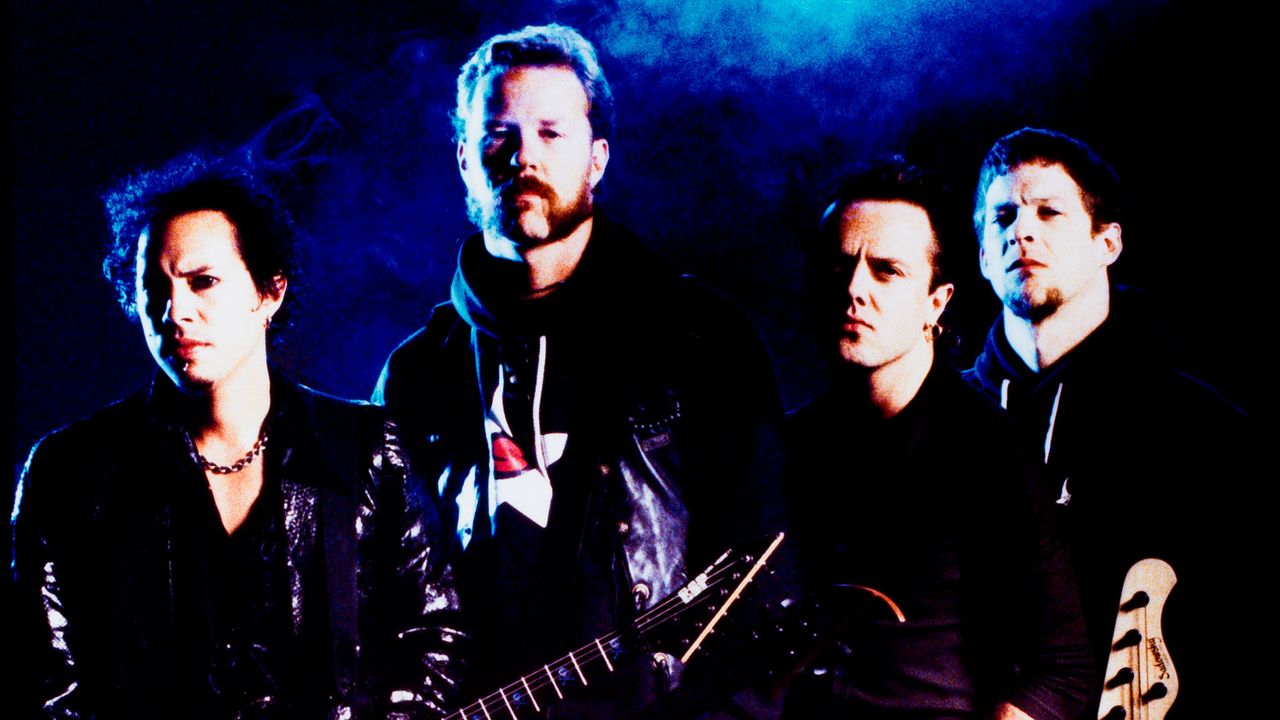
When Metallica released their fifth album, lovingly referred to as the Black Album, in 1991, they were rightly crowned the world's biggest metal band. Decades later, no metal record has yet to surpass its staggering 30 million units sold, but with its controversial follow-up, 1996’s Load, the band offered a very different sound.
Pushing a lighter, more commercial aesthetic, and chopped locks to boot, many felt the band had eschewed the identity that garnered them such lofty success. Now Bob Rock, who produced both those albums, has said it was a record that reshaped James Hetfield and Kirk Hammett’s guitar-playing relationship.
“Before Load, James did all the rhythms,” Rock tells The Metallica Report podcast (via Blabbermouth). “So the idea is Kirk was gonna play rhythms along with James. That changed everything, and some people don't like it.”
Rock had entered the fray their previous three records had been produced by Flemming Rasmussen (who has a theory for why ...And Justice For All was so light on bass guitar). Their new producer found that those experiences had left them a little limited.
“What they knew is how he put together a record, but I don't do that,” Rock says. “The way they did it, it's very mechanical. You can't go back and fix a kick drum. And you can't really realize what the whole song is until you finish it. But what you do when you record live, you get a good example of pretty much everything.”
That also saw Jason Newstead's approach to his bass parts heavily scrutinized.
“Jason wasn't playing bass like a bass player. He was just doubling the guitar,” Rock explains. “So I taught him, like, ‘Dude, be a bass player.’ So there are points where he's not playing the guitar riff; he's playing with the drums. That would've never happened if you just did it to a click and did all the guitars.
“So that opened the door, and it's my fault that I opened that door, because what they realized, through the recording of the Black Album, was there was something different about that, and in Load they embraced it.”
Rock is, in his own words, “a song person,” and he encouraged Metallica’s desire to experiment. They were getting inspired by different bands; Load is less Motörhead and Black Sabbath, more Led Zeppelin and Lynyrd Skynyrd. That set a precedent, and the way Hetfield and Hammett approached their tandem on the record was a key driver behind the band’s change of colors.
Jason wasn't playing bass like a bass player. He was just doubling the guitar. So I taught him, like, ‘Dude, be a bass player’
Bob Rock
As per the band's chat with Guitar World ahead of the release of Reload in 1997, that approach changed again.
“Kirk had a little more freedom on this one,” Hetfield explained. “His only instruction was to not play what I played. We wanted a point-counterpoint kind of vibe. And we're really splitting the guitars now to get some really different things going on.
“It's not exciting to us anymore,” he added of the album's lack of high-octane thrash riffs. “It's a little more exciting for us now to figure out more fucked-up chords, things that grind, dissonant bits.”







